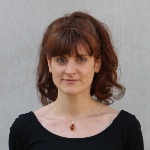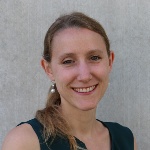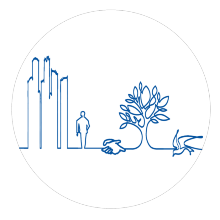Urban building physics and climate change
On February 2nd 2021, the kick-off event URBAN BUILDING PHYSICS AND CLIMATE CHANGE took place. The kick-off event offered more than 140 listeners an overview of the contents and goals of the dialogue series. In addition to the causes and consequences of climate change, the central role of urban spaces was addressed. Buildings, neighborhoods and cities are on the one hand causers and at the same time affected. However, they also offer opportunities for the design of livable and climate-adapted spaces of tomorrow. Specific examples, projects and activities, which were - among others - initiated by students of the University of Stuttgart, rounded off the substantive input of the evening. A large number of questions from the audience followed, resulting in an interesting exchange.
We make the presentations available to you here:
- Prof. Dr.-Ing. Philip Leistner, Director at the Institute for Acoustics und Buidling Physics IABP, University of Stuttgart: Greeting and survey
- Linda Meier, Academic Staff Member of IABP: Zum lebenswerten Raum von morgen
- David Kopp, Sustainability Speaker, Student Representative Council: Nachhaltigkeit an der Universität Stuttgart
People, heat and urban structures
On February 9th 2021, the second event of the dialogue series BUILDING A CLIMATE POSITIVE FUTURE TOGETHER took place under the theme PEOPLE, HEAT AND URBAN STRUCTURES.
Over 100 audience members attended the event. Speakers provided an overview of the specifics of human thermal sensation and heat stress in urban spaces in the wake of climate change. Building physics implications and measures to improve urban living and comfort were highlighted. Questions about fundings, the state of the art as well as possibilities for redevelopment and climate change adaptation through e.g. blue-green infrastructures were taken up and diligently commented on.
We make the presentations available to you here:
- Prof. Dr.-Ing. Gunnar Grün, Director at the Institute for Acoustics und Buidling Physics IABP, University of Stuttgart: Lebenswerte urbane Räume für Menschen
- Benedikt Schwertel, Energy consultant of the GIH BW: Energieberatung
- Philipp Alber, Staff Member of the Ramboll Studio Dreiseitl: Ramboll Studio Dreiseitl
Social justice
On 02.03.2021 the third event of the dialogue series BUILDING A CLIMATE POSITIVE FUTURE TOGETHER took place on the topic of SOCIAL JUSTICE.
More than 80 listeners followed the event. The scientific opening presented the possibilities of quantifying justice and illustrated the relevance of such instruments and their comparative values. In the next presentation, the arc to climate justice was covered and many related fields of action were addressed. The input part ended with a vivid and substantive presentation on social justice in housing as well as concrete application possibilities. The numerous questions were answered in an understandable way afterwards.
We make the presentations available to you here:
- Nathanael Ko, PhD student at Institute for Acoustics and Building Physics IABP, University of Stuttgart: Quantifizierung von Gerechtigkeit in der LCA
- Franziska Sander, Member of Emanzipation und Frieden e.V.
- Dr. Iris Beuerle, Association Director, vbw Verband baden-württembergischer Wohnungs- und Immobilienunternehmen e.V.: Soziale Gerechtigkeit und Wohnen
Living structures in the built environment (flora)
On 23.03.2021 the fourth event of the dialogue series BUILDING A CLIMATE POSITIVE FUTURE TOGETHER took place on the topic LIVING STRUCTURES IN THE BUILT ENVIRONMENT (FLORA).
Once again, there were interesting presentations and questions from nearly 100 participants. Prof. Dr. rer. nat. Leonie Fischer gave in a vivid scientific opening an overview of urban nature as well as the different perceptions of the effects of green on humans. Jonathan Müller continued his presentation with specific green application examples in a solution- and practice-oriented manner. Rainer Kapp concluded the input presentations with further examples, specific to the Stuttgart area, and emphasized the urgency of integrating green solutions in the city, not only, due to climatological aspects. The round of questions was additionally enriched by Hans Müller, who was able to give the audience, among other things, brief insights into the beginnings and the development of the company HELIX Pflanzen GmbH.
We make the presentations available to you here:
- Prof. Dr. Leonie Fischer, Institute management at the Institute of Landscape Planning and Ecology ILPÖ, University of Stuttgart: Lebendige Strukturen in der gebauten Umwelt (Flora)
- Jonathan Müller und Hans Müller, Managing Director of Helix Pflanzensysteme GmbH
- Rainer Kapp, Head of Department Urban Climatology of the city Stuttgart: Anpassung an die Folgen des Klimawandels in Stuttgart
Living structures in the built environment (fauna)
On April 13th 2021, the fifth event of the dialogue series BUILDING A CLIMATE POSITIVE FUTURE TOGETHER took place on the topic of LIVING STRUCTURES IN THE BUILT ENVIRONMENT (FAUNA).
Once again, there were interesting presentations followed by questions from nearly 100 participants. Christian Stotzem gave in a descriptive opening an insight into compensation measures and tasks of nature conservation on state and federal level. Afterwards, Prof. Dr. Wolfgang W. Weisser and Prof. Dr.-Ing. Thomas E. Hauck from Animal-Aided Design gave specific examples of how such compensatory measures can already be taken into account during the planning stage. Dr. Hans-Dietrich Reckhaus concluded the input presentations with the question of the importance of insects and his concept of drawing society's attention to this.
We make the presentations available to you here:
- Christian Stotzem, Federal Agency for Nature Conservation, Division II 1.1 Zoological Species Protection
- Prof. Dr. Wolfgang W. Weisser und Dr.-Ing. Thomas E. Hauck, Department of Terrestrial Ecology, Technical University of Munich / Field of expertise Open Space Planning, University of Kassel
- Dr. Hans-Dietrich Reckhaus, Transforming shareholder of the Reckhaus Gruppe, Initiator of the quality mark
«Insect Respect»: Insect Respect - Das Gütezeichen für einen neuen Umgang mit Insekten
Contact

Pia Krause
Dr.-Ing.
Linda Meier
M.Sc.Elternzeit



